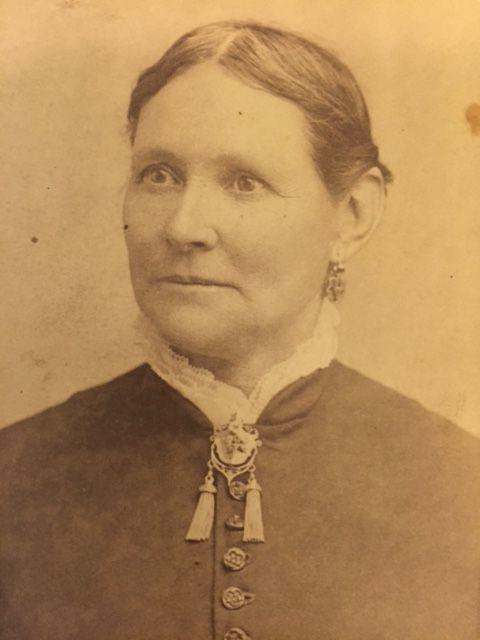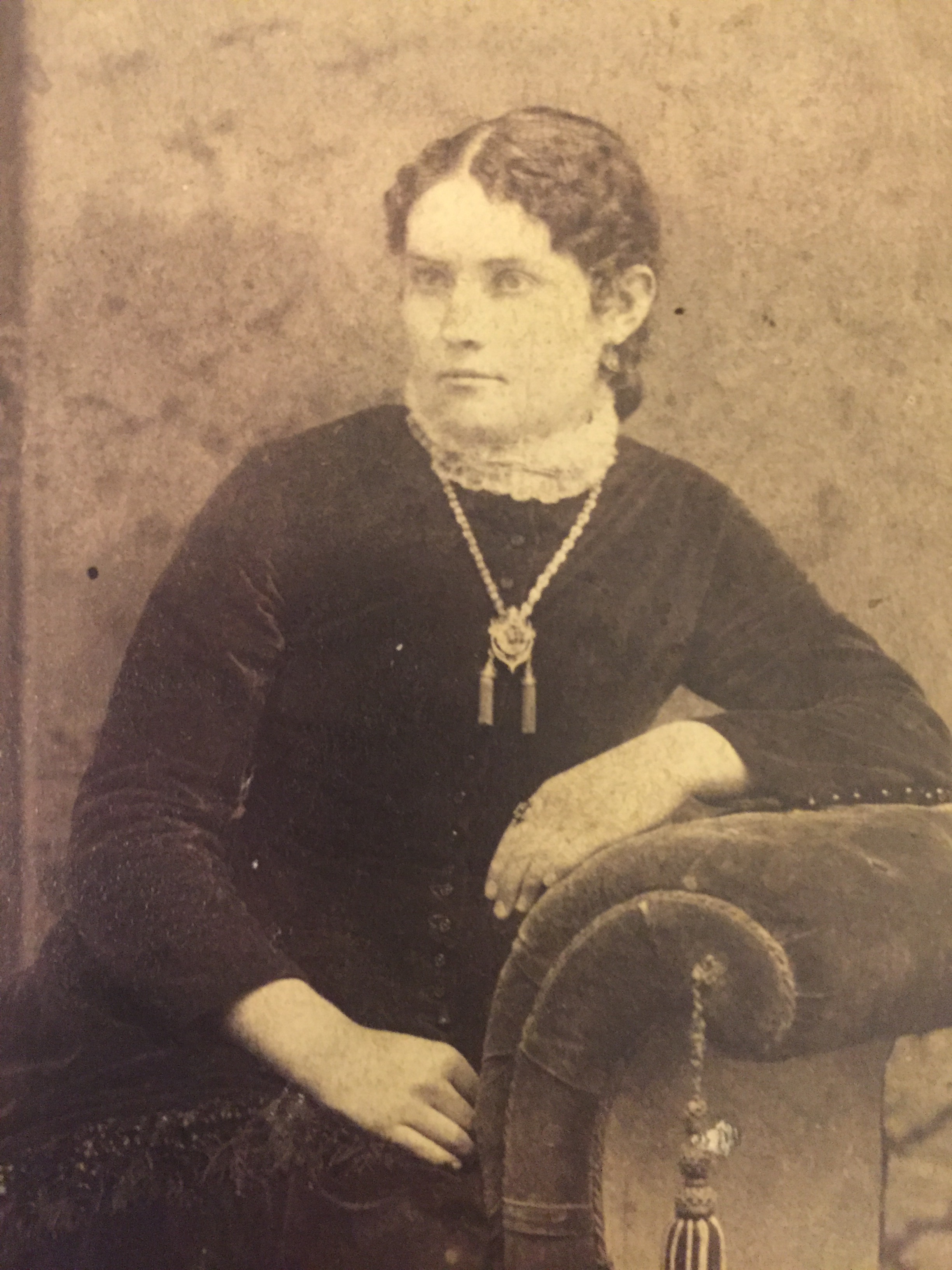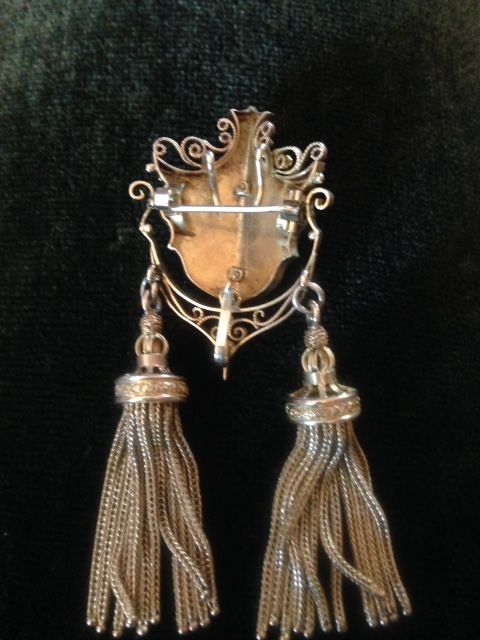In my most recent column I wrote about a Victorian tassel pin. The 95 year old owner of the pin generously shared images of her grandmother wearing it.
We are so happy you are interested in the pin. The woman wearing it at the neck is her grandmother. The woman wearing it on the chain may be her great aunt.
Thank you so much; this will be a great gift to my mother-in-law.
I’m so excited about the photographs! Period images give us so much information about the material culture of the age: what type of furniture is she seated on? What items are in the background? Is she holding a book? needlework? A pet? Period photographic portraits are a treasure trove of information about the time and even social or educational status of the sitter.
Joan Severa’s 1995 book “Dressed for the Photographer: Ordinary Americans and Fashion, 1840-1900” is an exceptionally well researched and documented collections of portraits of men, women and children. Mot only does Ms. Severa address the fabric choices, sleeve styles and skirts sitters; she analyzes hairstyles, hats and crinolines.
By comparing the facial features and details of hairstyles, my guess is that the portrait is of the same woman separated by years. The seated woman wearing the brooch as a necklace styles her hair low on the nape of her neck with marcel waves framing her face. Her dress is snug fitting with naturally fitted shoulders, buttoned sleeves, a dropped waist and a fringed peplum. All of these elements point to the portrait being from the early 1870s. And notice how the tassel on the necklace is mirrored on the arm of the fashionable upholstered chair she sits in!
The portrait of the woman with the pinned on brooch appears to be the same woman a couple of decades later. Her hair is styled closer to her head with bun higher on the crown; her tailored collar and tightly buttoned top likely ended at the natural waist. These elements are appropriate to a slightly older woman and date the portrait to the mid to late 1880s.
For more information about the brooch itself, I contacted a colleague. Gemologist Maury Woulf is an accredited jewelry appraiser with decades of experience and strong understanding of jewelry in history. He agreed with me that the brooch was made in the mid-Victorian era. And although the tassels and filigree are consistent with the Moorish Revival style popular at the time, Maury feels that the tassels are out of proportion to the brooch and may have been replacements or add-ons. He also pointed out that the pin likely held a watch on a chain in addition to the tassels.
Neither of us saw the jewelry in person so neither of us can determine the actual type or value of the metal. The slight differences in the colors on the tassels lead us both to think that they are gold filled; the body of the pin and the applied filigree could be either gold or gold filled.
To view more period portraits or interior photographs visit the California Historical Society or the History Department at the Oakland Museum.




